After weeks of civil disobedience, arrests, and negotiations with the police, civil society made its mark on December 12.
The state of emergency declared by French President François Hollande in the aftermath of the November 13 terrorist attacks effectively outlawed demonstrations and dealt a major blow to climate activists hoping to make their voices heard during the COP21 negotiations. Ahead of the climate march pegged to the start of the talks on November 29, over 20 environmental activists were put under house arrest, and gatherings were confined to the Paris suburbs. The climate march itself, which some had hoped would attract 200,000 people, was canceled entirely; those who challenged the ban were met with tear gas and pepper spray. Over 300 people were detained on November 29 alone.
Organizers provided training for would-be participants—how to wash pepper spray from one’s eyes most effectively; what to do if arrested—a sort of Civil Disobedience 101.
Civil-society groups, then, were forced to be creative. During the two weeks of negotiations, small groups staged protests across France and the world. Online, there were the Climate Games, the “world’s largest Disobedient Action Adventure Game.” Anonymous hacked the UNFCCC website. The French Zoological Collective for the Liberation of Nature, posing as 50 dancing animals, occupied the International Chamber of Commerce in Paris. BrandalismUK put up fake advertisements across Paris (“VW: We’re sorry that we got caught.”). Liberate Tate spilled “oil” on the floor of the Louvre to protest those fossil-fuel companies among the sponsors of COP21. (They were arrested).
Then, on December 12, activists took it up a notch. Mass action was necessary to make sure “the people will have the last word,” as Emma Biermann of 350.org told me. The protests were engineered to push the limits imposed by the state of emergency—which defines a protest as more than two people carrying a political message—while avoiding the clashes and mass arrests of November 29. The show began at 11:20 a.m., when Friends of the Earth–France unfurled a virtual banner over the map of Paris using only their smartphones. Three thousand concerned individuals from across the globe headed to their assigned locations and logged on to register their positions using their phones’ GPS. Thousands of dots sprung up, spelling “Climate, Justice, Peace,”—a kind of aerial art for the Internet:
But it was the “red-line action,” coordinated by 350.org, with the participation of 150 civil-society organizations, that stole the show. The plan was that thousands of protesters would gather to draw a red line through the west of the city, symbolizing the climatological line that cannot be crossed if the Earth is to remain a “safe, just, and livable planet.” The action was meticulously planned so as not to provoke the police. In fact, the red line was initially meant to encircle the airport at Le Bourget, close to where COP21 was taking place. But, with heightened security measures and police on edge, the action was relocated. 350.org nonetheless conducted dozens of briefings over the course of the week, during which they emphasized that the demonstration would be non-violent, with no degradation, no escalation, and no crossing police lines. Organizers provided training for would-be participants—how to wash pepper spray from one’s eyes most effectively; what to do if arrested—a sort of Civil Disobedience 101. The protest was unauthorized, and no one knew what to expect.

Protesters were told to arrive in pairs—a concession to the rule about no more than two people—each carrying something red, whether it be a scarf, an umbrella, or a poncho. At the sound of a fog horn, protesters would gather and place red tulips, distributed ahead of time, on a two kilometer-long red banner that ran along the ground of the Avenue de l’Armée. (The location was deeply symbolic. The avenue runs from the Arc de Triomphe—under which lies France’s Tomb of the Unknown Soldier—and Porte Maillot, the gate to the financial district of La Défense.) Two minutes of silence would then be observed, in remembrance of the victims of all wars, including the victims of climate change.
At Friday’s final briefing, 350.org reminded an audience of hundreds that climate change is the result of “a war waged against the poor” by fossil-fuel companies, many of which have offices in La Défense. At the third sounding of a foghorn, organizers said, people would melt back into the scenery, tucking away their bits of red line before heading to the authorized protest at the Eiffel Tower.
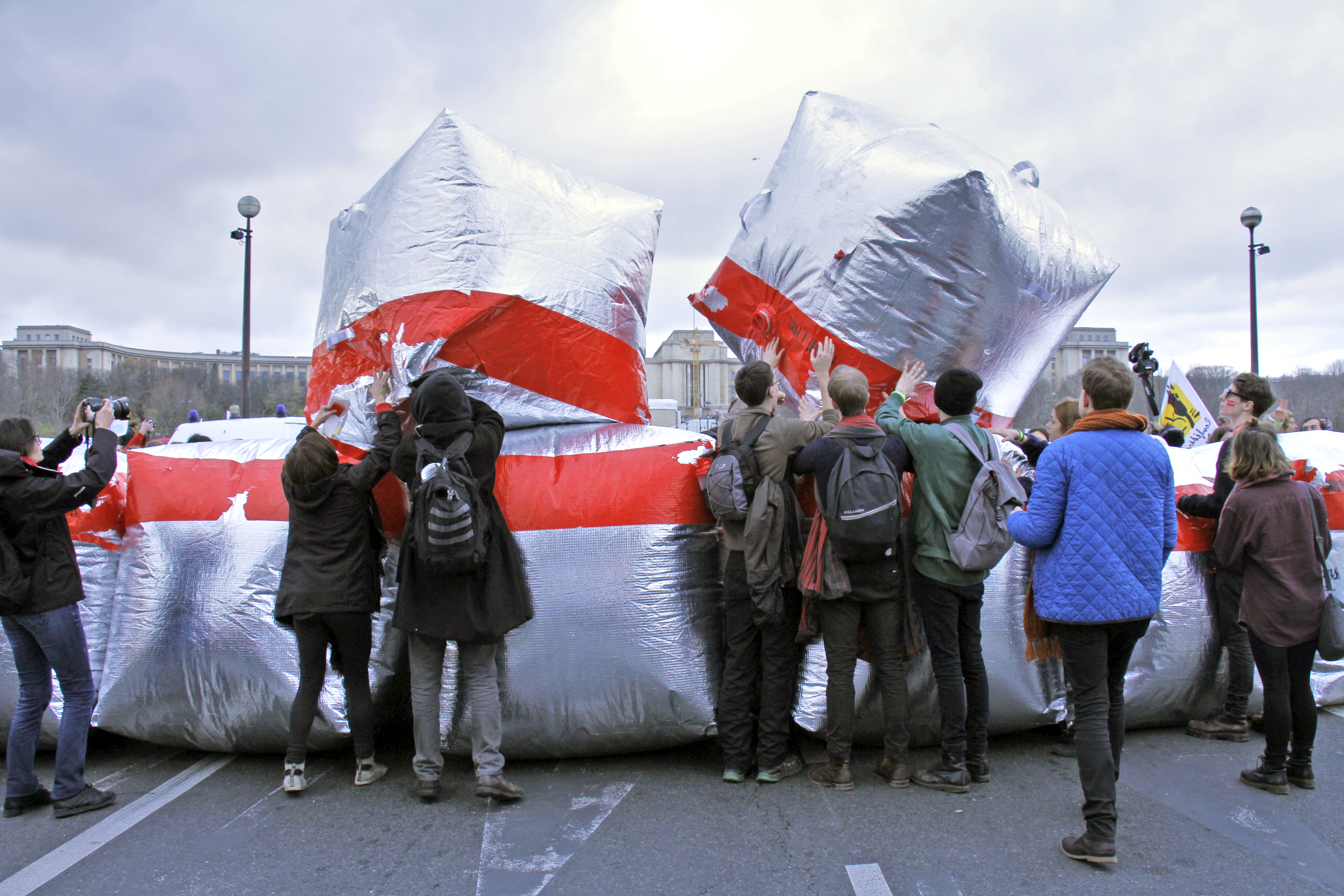
Even when the action was authorized at the last minute, at 6 p.m. on Friday evening, not everything went as planned. Thousands of enthusiastic protesters arrived by bike, blocking traffic at the Arc de Triomphe roundabout. No policemen were in sight to regulate the flow. People streamed out of the Metro in large groups, sprinkled with red: red lines painted on their faces, red lipstick, red tulips and roses, red jumpsuits. An estimated 15,000 people filled the Avenue de l’Armée. The atmosphere was festive, with brass bands and performance art. Many people had come with their children. A dozen or so giant silver mylar cubes, painted with a red line and designed by artist Artur Van Balen, bounced around the crowd. While helicopters churned overhead, riot police stood by and watched. They did not interfere with foot traffic arriving on the avenue, but allowed people to come and go without being searched, in contrast to November 29, when protesters were blockaded at Place de la Republique.
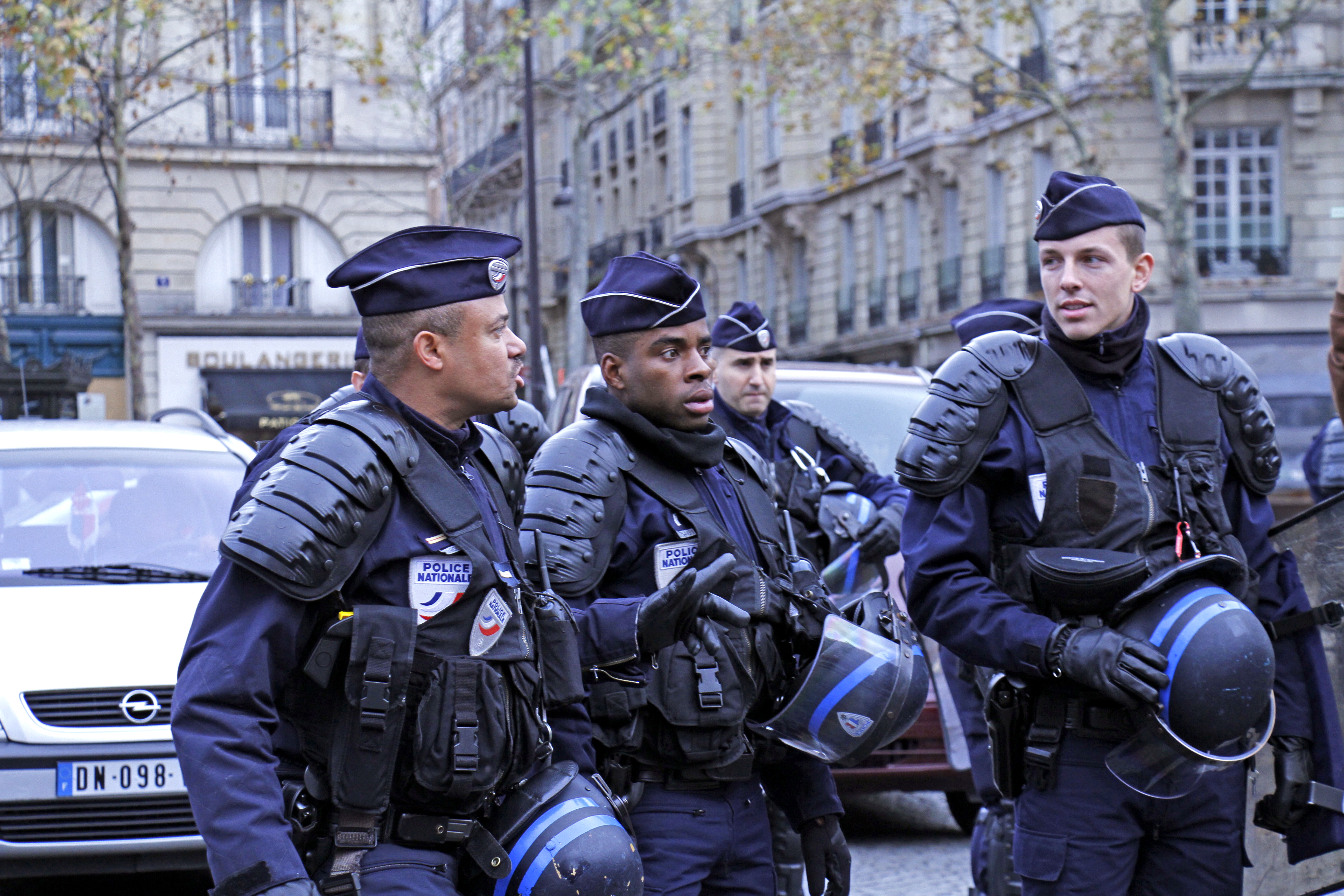
After almost two hours in place, the demonstration promptly pivoted, pulling a U-turn and heading down Avenue Malakoff, a neighboring street that had not been on the itinerary. Protesters brought traffic circulation to a halt. Most drivers sat dazed in their cars, while some honked in solidarity. The police did nothing to stop the protestors, but instead improvised to direct traffic. The neighborhood of the 16th arrondissement, one of the wealthiest in the city, is not accustomed to streams of protesters walking down the middle of its streets chanting “Ah-ah-an-ti-ca-pi-ta-lis-me” (“anti-capitalism!”); many locals craned their heads to gawk at the passersby. Marchers continued down to the Trocadero roundabout and the esplanade overlooking the Eiffel Tower. The red line trailed down the steps to the Seine and onto the Pont d’Iéna, where the demonstrators promptly took a seat. Many took out snacks, munching on dried almonds and pomegranate seeds. The Climate Guardian Angels, a protest theater troupe that had been present throughout COP21, sat serenely in a line facing the crowd. Demonstrators built a wall with the silver cubes, all the while chanting “Whose bridge? Our bridge. Whose planet? Our planet” and “Keep it in the ground!” in reference to the demand that 80 percent of fossil fuels be left unexploited in order to halt global warming.

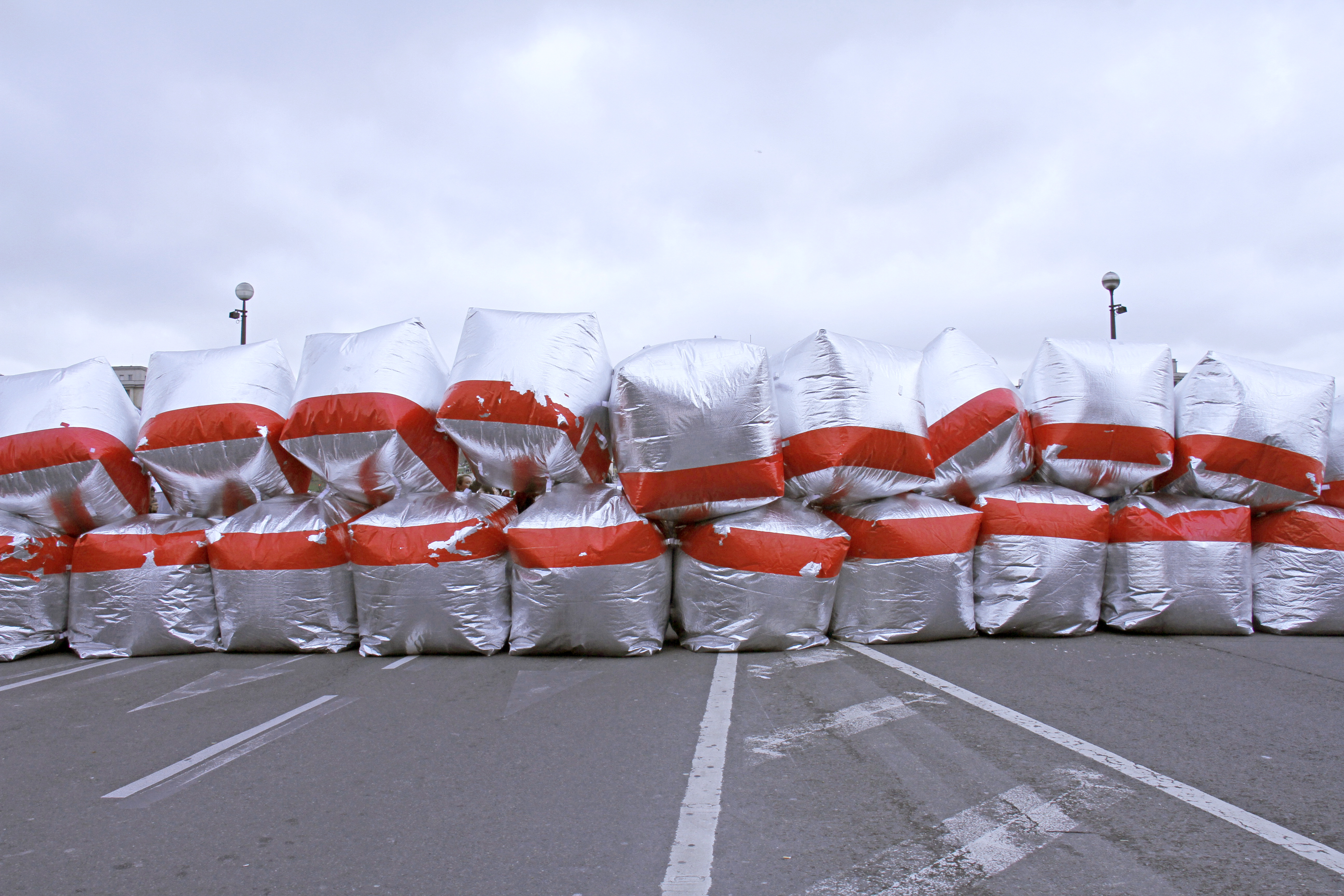
A police officer tried to explain in broken English that the protesters should stand up and move on: There were, after all, people who wanted to get by on their way to the approved protest in the park. Activists politely and calmly refused. After 20 minutes or so of struggling to hold up the wall, they grabbed the cubes together and carried them forward, along the red line, to join other protesters at the other end of the park.
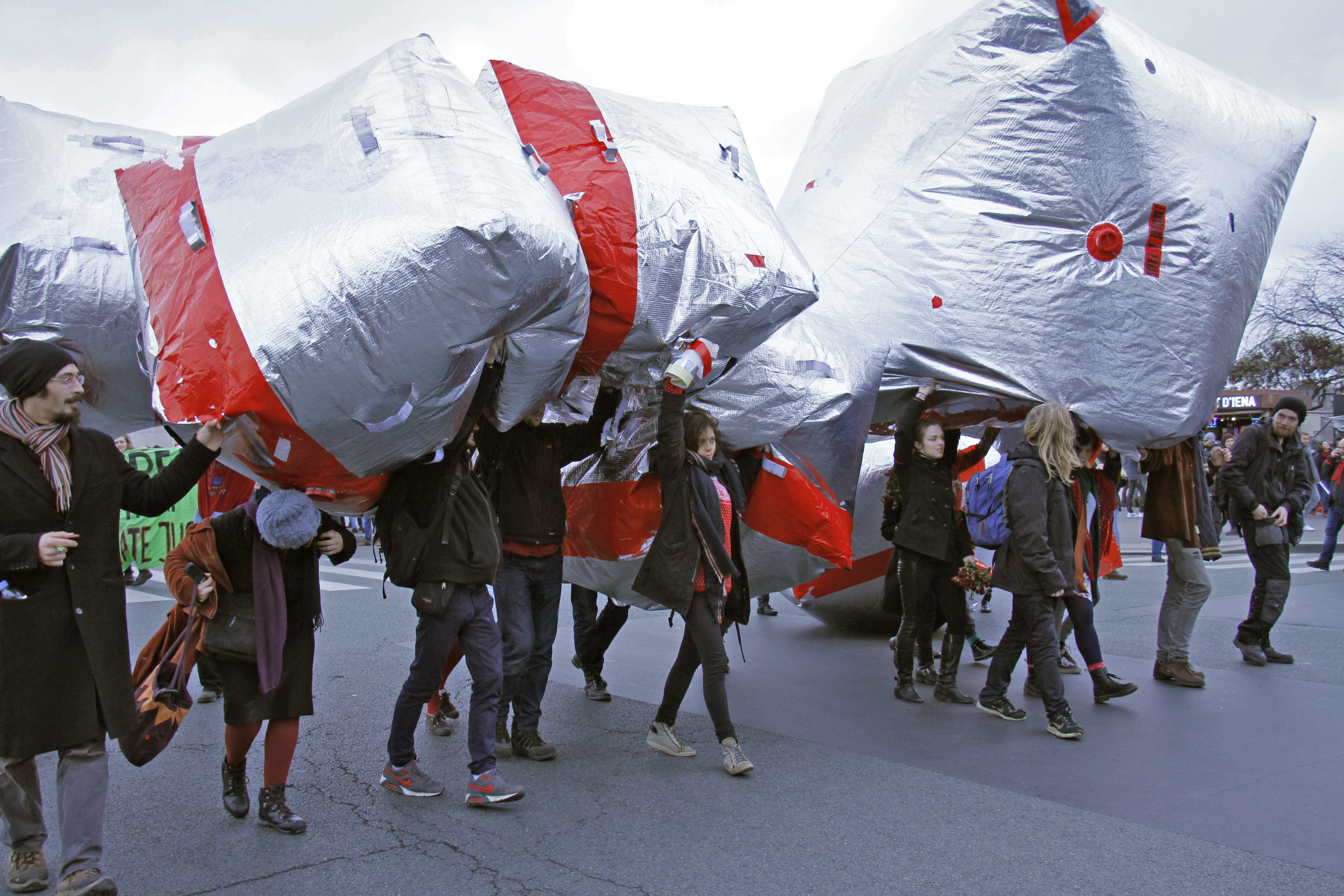
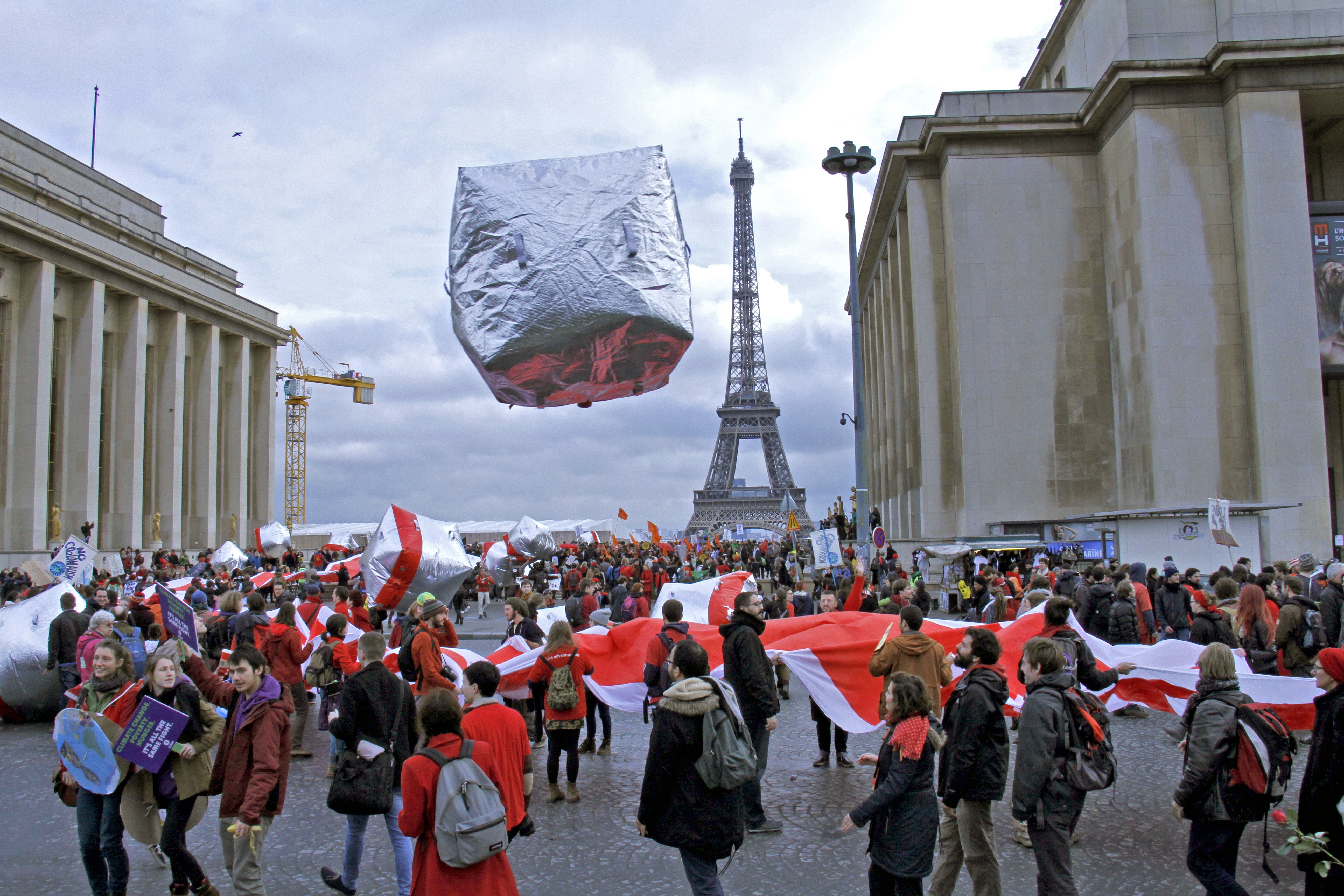

“Catastrophic Consequences of Climate Change” is Pacific Standard‘s year-long investigation into the devastating effects of climate change—and how scholars, legislators, and citizen-activists can help stave off its most dire consequences.





